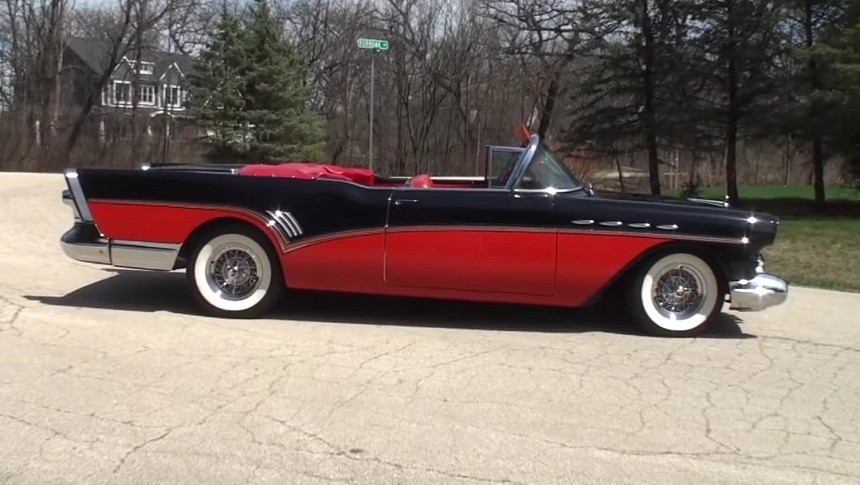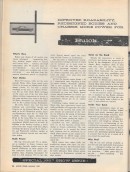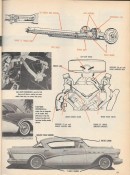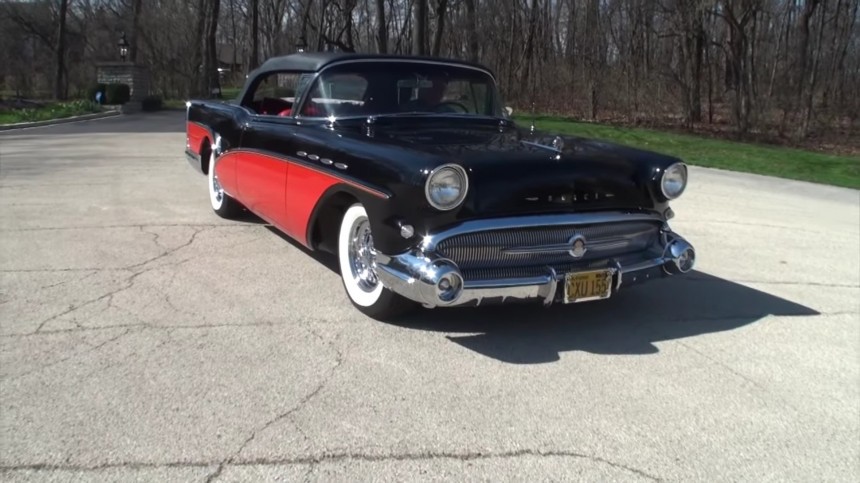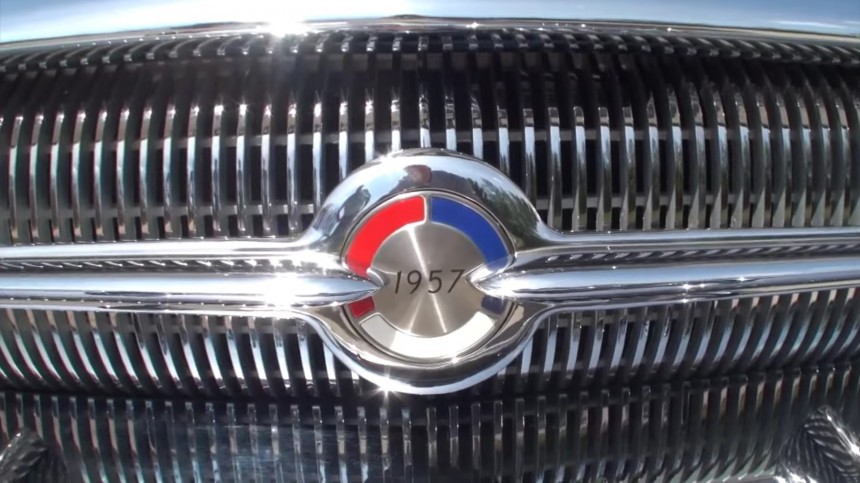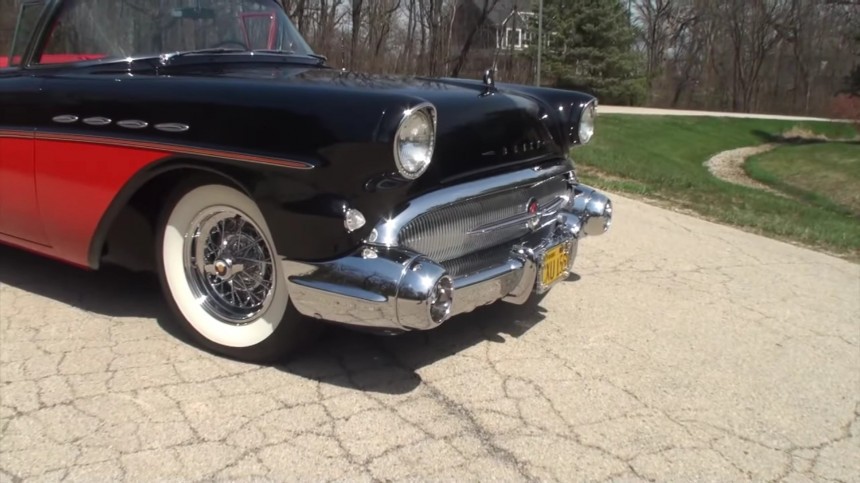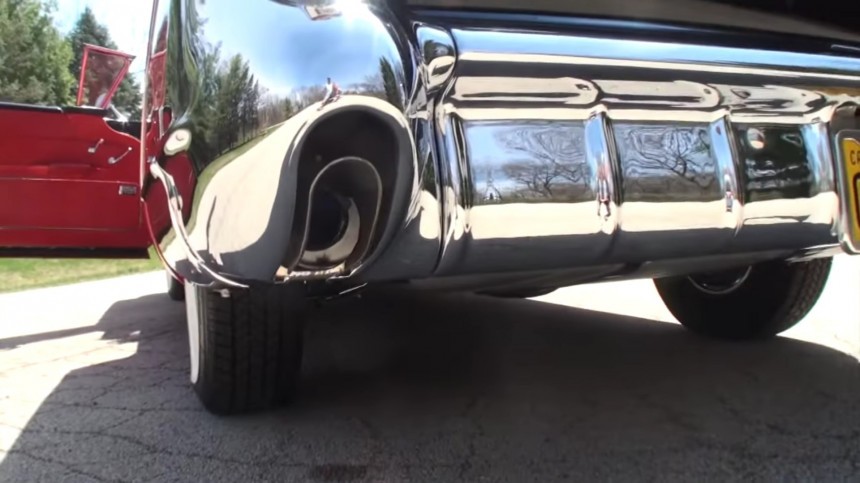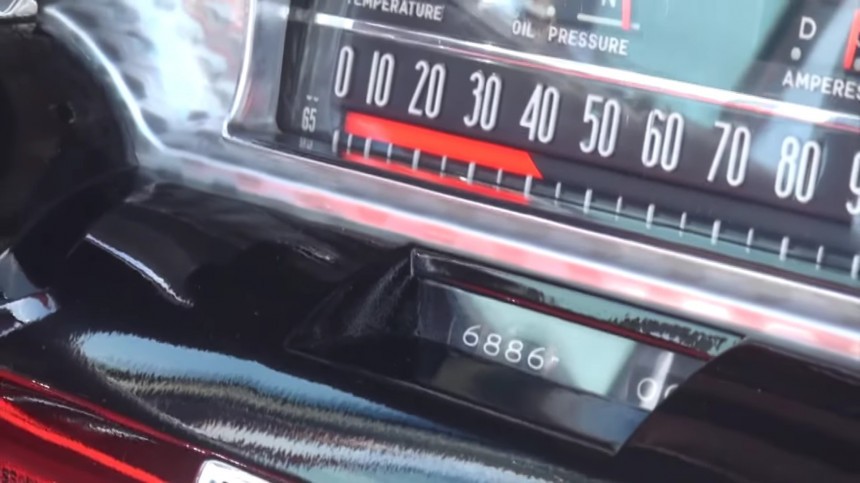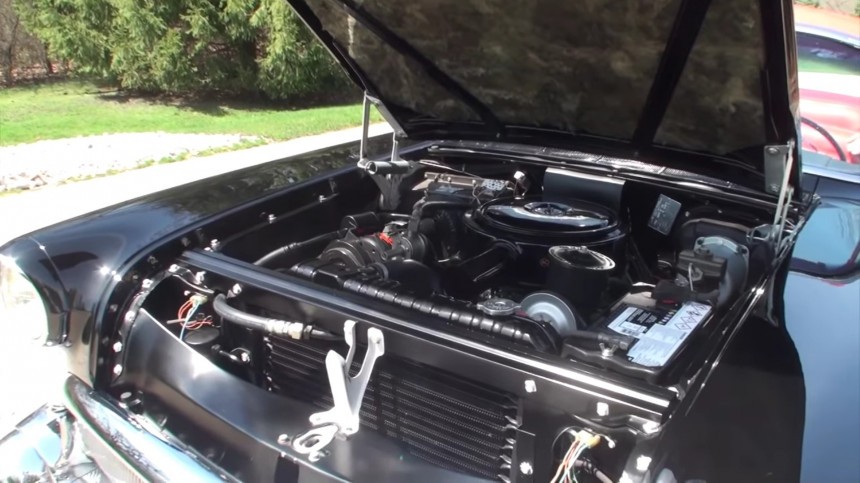In General Motors' divisional segregation, Buick came second to top-tier Cadillac, pairing the sportiness of lower-end Pontiac and Chevrolet with Caddy's luxury and comfort. As the booming sixth decade of the 20th century was slowly drawing to a close, Buick suddenly saw its sales figures drop furiously. In 1957, a corporation-wide shift in carmaking philosophy was proclaimed.
In the late-50s America, automobile companies began to part ways with the pre-war paradigms that echoed back to before the Great Depression. Cars got lower, sleeker, wider, and less bulky, and improved mechanics made driving increasingly enjoyable, promising both performance and practicality.
General Motors was the biggest carmaker in the world, and it dominated its domestic market with a 52% market share dictatorial authority. And yet, somehow, amid all this business success, Shangri-La, the Buick Division experienced a most unpleasant nosedive in the bean counters' books.
In just two years, the company's sales dropped by half – 405,086 in 1957, down from 738,814 in 1955 – in a free-fall that would roll on for five years. Why precisely this earthquake shattered GMs apparently undisputable reign is one for historians, but it may have had to do with customers' automobile tastes.
The archrivals from Chrysler were leading the way in styling and design, and they pretty much set the pace for the decade's visual trends. Buick replied rather conservatively in '57 – owing to corporate-sized inertia in adopting the youthfulness, simplicity, and elegance for their models.
Although a new "Nailhead" V8 was introduced, offering a much more attractive 300 hp and 400 lb-ft (305 ps and 542 Nm). The power increase over the previous model year was a dramatic 64 hp (65 ps) – thanks to a larger displacement and compression ratio.
The engine volume jumped from 322 CI (5.3 liters) to 364 cubes (6.0 liters), and the 10.0:1 compression, paired with 93 octane fuel, significantly improved the brand's motoring attributes. The upper-end offer from Buick came in the shape of a revamped Roadmaster, with no less than seven body styles to choose from.
Regardless of door numbers and roof styles, the Roadmasters of '57 had a 215-inch-long (5.5-meter) automobile and weighed anywhere from 4,500 to 4,900 lb (2,000 – 2,222 kg). The most eye-catching was the convertible, which accounted for just one percent of the total Roadmaster production run of that model year, with 4,363 units.
Due to this relative rarity, examples of this version rank reasonably high in the collectors' lists. That is especially valid for one in a condition as admirable as the Roadmaster featured in the video shot a couple of days ago by Lou Costabile, the YouTubing classic car vlogger. The black-and-red drop-top received a very well-executed restoration, and it is a shining example of gearhead-itis.
Some of our readers might have experienced the symptoms, with the most severe cases becoming landmarks of incurable piston addiction. The condition primarily manifests by a continuous urge to own an automobile – make and model are random – of a particular type, model year, trim, body type, or drivetrain.
A four-decade Buick dealer, the owner of this Roadmaster Convertible is undoubtedly a keen connoisseur that carefully selected his must-have automobile. Judging by its looks (and sounds), the brand enthusiast made a highly educated selection before deciding upon this gorgeous example.
It is a looker – no question about that – but the remnants of the old days (that probably severed the car's buyer appeal) are strongly visible. The chrome inflation on the front and rear (and the sides, to a lower extent) and the protruding Dagmars hint at mid- to late-40s models.
The Roadmaster was the highest available trim offered for Buicks, with many features installed as standard – power steering, safety group, the windshield washer (with wide angle wiper), Foamtex seat cushions, or dual exhausts. The latter where integrated into the rear bumper, at the opposite end of the tailfins' top tips.
Luxury accessories were available for the more pretentious buyer – like the $330 "Frigidaire" air conditioner (the most expensive extra offered), the six-way power seats, or the $123 Wonderbar Radio with an electric antenna.
Back in the day, "luxury" translated into practical details, like the additional center-of-dash air-conditioning vent, the dual ashtrays for the driver and front passenger, or the Cam-O-Matic vacuum-operated, adjustable-speed windshield wipers.
All convertible Roadmasters had power rag-tops and a Safety-Minder. This speed-warning system served as a crude form of cruise control. A buzzer was wired to the speedometer and emitted a continuous whizz in the cabin when the driver-selected speed was reached.
The rather annoying noise would turn off when the driver slowed down or the car accelerated to more than 15 mph (24 kph) above the preset value. As a precaution, the buzzer could be deactivated by setting the speed alarm to 110 mph (177 kph).
The Roadmaster came with the two-speed automatic Dynaflow gearbox linked to a variable-pitch torque converter. This feature eliminated the need for a gear lever. It paired with another very cool (for 1957) component – a foot-operated starter.
The driver had to have the car in Park or Neutral, set the ignition button to Lock, and then press the gas pedal – the engine would fire up. To up the wow factor, the Wonderbar Radio had a tuning switch installed to the left of the brake pedal. Essentially, it was a hands-free frequency adjuster that selected the next available station when the driver stepped on the floor-mounted button.
The ribbon speedometer was another fancy detail. Instead of a traditional needle or bar, the mph indicator consisted of a red strip that progressively increased in size, proportional to the speed. The Glare Proof mirror was a claimed safety and comfort feature, although it was nothing more than a classic day/night rearview mirror.
As you can observe in the video, the engine runs smooth and silent – Buick emphasized roadability over speed and acceleration, although the engine isn't a slug. Nonetheless, GM was far behind the competition in the firepower contest: Chrysler was the undisputed ruler in this segment, with its 375 hp (380 ps) Firepower HEMI that profoundly outgunned any competition.
The 1957 Roadmaster was the penultimate year for the nameplate; following the neck-breaking collapse in division sales, Buick overhauled its entire lineup naming convention. It would be another 33 years until the Roadmaster badge would land on a Buick – the short-lived Roadmaster of 1991-1996.
General Motors was the biggest carmaker in the world, and it dominated its domestic market with a 52% market share dictatorial authority. And yet, somehow, amid all this business success, Shangri-La, the Buick Division experienced a most unpleasant nosedive in the bean counters' books.
In just two years, the company's sales dropped by half – 405,086 in 1957, down from 738,814 in 1955 – in a free-fall that would roll on for five years. Why precisely this earthquake shattered GMs apparently undisputable reign is one for historians, but it may have had to do with customers' automobile tastes.
Although a new "Nailhead" V8 was introduced, offering a much more attractive 300 hp and 400 lb-ft (305 ps and 542 Nm). The power increase over the previous model year was a dramatic 64 hp (65 ps) – thanks to a larger displacement and compression ratio.
The engine volume jumped from 322 CI (5.3 liters) to 364 cubes (6.0 liters), and the 10.0:1 compression, paired with 93 octane fuel, significantly improved the brand's motoring attributes. The upper-end offer from Buick came in the shape of a revamped Roadmaster, with no less than seven body styles to choose from.
Due to this relative rarity, examples of this version rank reasonably high in the collectors' lists. That is especially valid for one in a condition as admirable as the Roadmaster featured in the video shot a couple of days ago by Lou Costabile, the YouTubing classic car vlogger. The black-and-red drop-top received a very well-executed restoration, and it is a shining example of gearhead-itis.
Some of our readers might have experienced the symptoms, with the most severe cases becoming landmarks of incurable piston addiction. The condition primarily manifests by a continuous urge to own an automobile – make and model are random – of a particular type, model year, trim, body type, or drivetrain.
It is a looker – no question about that – but the remnants of the old days (that probably severed the car's buyer appeal) are strongly visible. The chrome inflation on the front and rear (and the sides, to a lower extent) and the protruding Dagmars hint at mid- to late-40s models.
The Roadmaster was the highest available trim offered for Buicks, with many features installed as standard – power steering, safety group, the windshield washer (with wide angle wiper), Foamtex seat cushions, or dual exhausts. The latter where integrated into the rear bumper, at the opposite end of the tailfins' top tips.
Back in the day, "luxury" translated into practical details, like the additional center-of-dash air-conditioning vent, the dual ashtrays for the driver and front passenger, or the Cam-O-Matic vacuum-operated, adjustable-speed windshield wipers.
All convertible Roadmasters had power rag-tops and a Safety-Minder. This speed-warning system served as a crude form of cruise control. A buzzer was wired to the speedometer and emitted a continuous whizz in the cabin when the driver-selected speed was reached.
The Roadmaster came with the two-speed automatic Dynaflow gearbox linked to a variable-pitch torque converter. This feature eliminated the need for a gear lever. It paired with another very cool (for 1957) component – a foot-operated starter.
The driver had to have the car in Park or Neutral, set the ignition button to Lock, and then press the gas pedal – the engine would fire up. To up the wow factor, the Wonderbar Radio had a tuning switch installed to the left of the brake pedal. Essentially, it was a hands-free frequency adjuster that selected the next available station when the driver stepped on the floor-mounted button.
As you can observe in the video, the engine runs smooth and silent – Buick emphasized roadability over speed and acceleration, although the engine isn't a slug. Nonetheless, GM was far behind the competition in the firepower contest: Chrysler was the undisputed ruler in this segment, with its 375 hp (380 ps) Firepower HEMI that profoundly outgunned any competition.
The 1957 Roadmaster was the penultimate year for the nameplate; following the neck-breaking collapse in division sales, Buick overhauled its entire lineup naming convention. It would be another 33 years until the Roadmaster badge would land on a Buick – the short-lived Roadmaster of 1991-1996.
